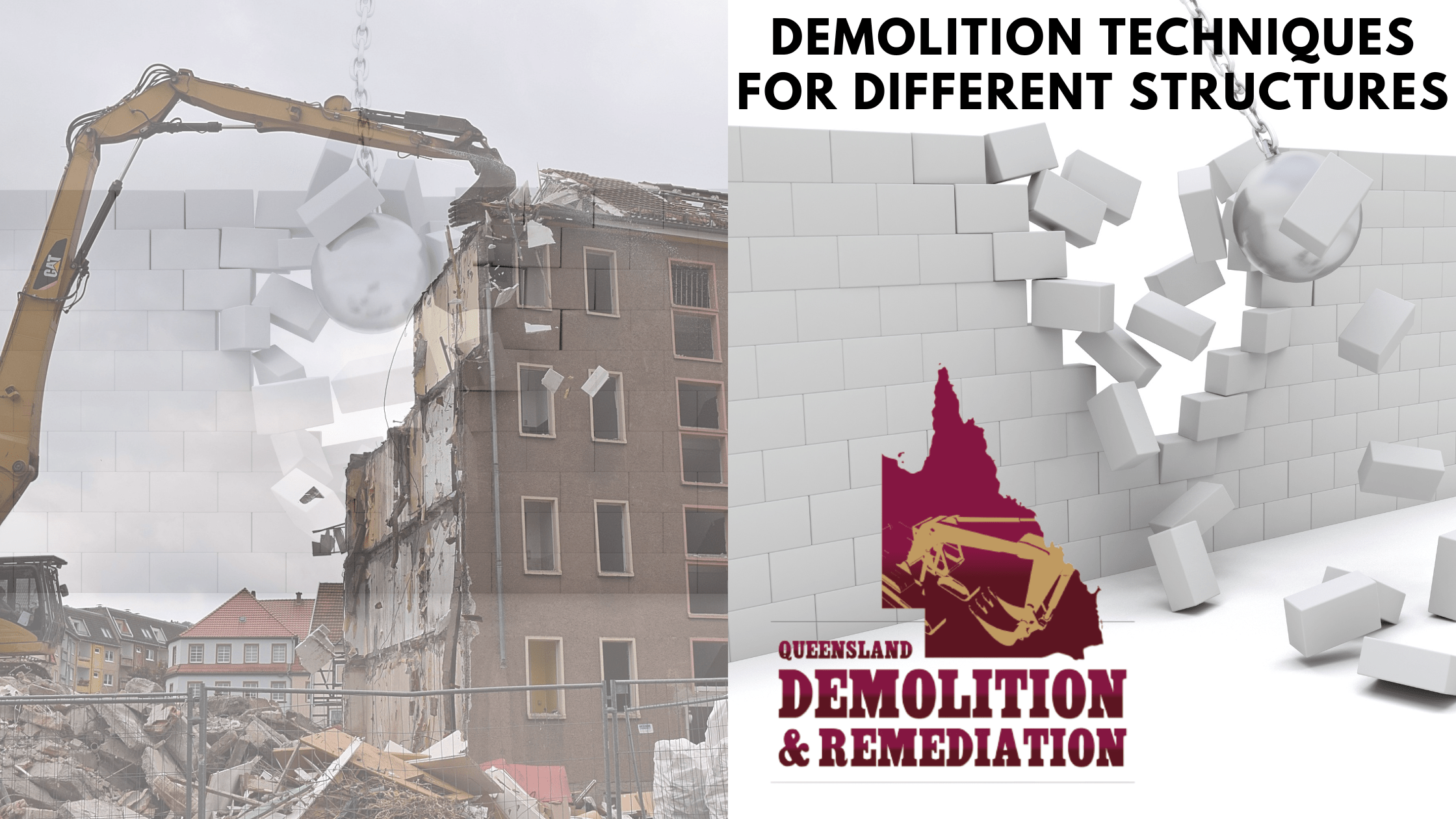When it comes to demolishing structures, whether they are residential, commercial, or industrial, there are various techniques and considerations that need to be taken into account. The process of tearing down a building is not just about brute force; it requires strategic planning, adherence to safety measures, and careful consideration of environmental concerns. In this article, we’ll delve into the diverse techniques employed for demolishing different types of structures and emphasize the importance of a well-thought-out approach.
Residential Demolition Techniques
Selective Demolition
Selective demolition is a precise technique often used in residential settings where certain parts of a structure are removed while preserving valuable components. This method requires meticulous planning to salvage materials and minimize waste.
Mechanical Demolition
Mechanical demolition involves the use of machinery like excavators and bulldozers to dismantle a structure. It’s effective for larger residential buildings where controlled dismantling is necessary.
Deconstruction
Deconstruction focuses on disassembling a structure with the intent to salvage as much material as possible for reuse. It’s an eco-friendly approach that reduces waste and contributes to sustainable practices.
Commercial Demolition Techniques
High-Reach Excavators
High-reach excavators are equipped with extended arms to reach great heights, making them ideal for tall commercial structures. They dismantle buildings from the top down in a controlled manner.
Implosion
Implosion is a dramatic technique used in commercial demolition, involving a strategic use of explosives to collapse a building inward. It requires precise calculations to ensure safety and prevent damage to nearby structures.
Wrecking Ball
The classic wrecking ball method involves a heavy ball suspended from a crane, swinging and impacting the structure to cause controlled destruction. It’s suitable for structures with open interiors.
Industrial Demolition Techniques
Controlled Demolition
Controlled demolition uses specialized equipment to carefully dismantle industrial structures. This technique ensures safety and precision, even in complex environments like factories and power plants.
Dismantling
Dismantling is a manual technique where structures are taken apart piece by piece. It’s common in industrial settings where machinery and equipment need to be salvaged.
Explosive Demolition
Explosive demolition is employed for large industrial structures that can’t be easily dismantled. Engineers strategically place explosives to control the direction of the collapse, ensuring minimal damage to the surroundings.
The Importance of Strategic Planning
Effective demolition starts with comprehensive planning. Factors such as the structure’s location, neighboring buildings, and the desired end result play a crucial role in choosing the appropriate technique.
Ensuring Safety Measures
Safety is paramount in demolition projects. Workers must wear protective gear, and a thorough structural evaluation is essential to identify potential hazards.
Hazard identification helps formulate a strategy to mitigate risks and protect both the workers and the surrounding environment.
Environmental Concerns in Demolition
Demolition can generate significant waste, but strategies like waste management, recycling, and reusing materials can minimize the environmental impact. Implementing these practices contributes to sustainable construction practices.
FAQs
1. What is the most common technique for residential demolition?
The most common techniques are selective demolition, mechanical demolition, and deconstruction, depending on the goals of the project.
2. How is implosion used in commercial demolition?
Implosion is used in commercial demolition to safely and efficiently bring down large structures by strategically placing explosives to control the collapse.
3. Are there eco-friendly methods for industrial demolition?
Yes, deconstruction and controlled demolition are eco-friendly methods that prioritize salvaging materials and minimizing waste.
4. What safety precautions are crucial during demolition?
Safety precautions include wearing protective gear, conducting thorough structural evaluations, and identifying potential hazards in advance.
5. How can demolition waste be effectively managed?
Demolition waste can be managed through proper waste management practices, recycling materials, and reusing salvaged components whenever possible.
Conclusion
Demolishing structures requires a delicate balance between technique, safety, and environmental responsibility. Whether it’s a residential, commercial, or industrial building, the right approach involves meticulous planning, adherence to safety measures, and conscious consideration of the environment.

